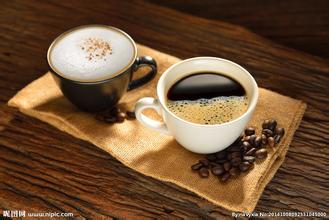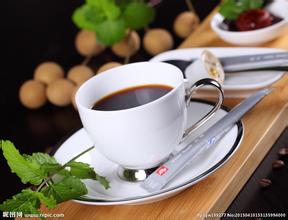Introduction to the species and types of coffee trees in Liberia
Main types of coffee trees: Arabica
The first is Arabica beans, beans account for 70% of the world's production, world-famous blue mountain coffee, mocha coffee, etc., almost all Arabica species. The other is the Robasta species, which is native to Congo in Africa and accounts for about 20% to 30% of the world's production. Different varieties of coffee beans have different tastes, but even the same variety of coffee trees, due to different soil, different climates and other effects, the coffee beans grown also have unique flavors. The other two species are Liberian and Ethiopian.
Bean shape smaller, positive was long oval, narrow and tortuous cracks in the middle, beans on the back of the arc shape more flat.
Arabica coffee is produced in Brazil, Colombia, Central America, Costa Rica, Guatemala, Jamaica, Mexico and Ethiopia in South America. Arabica coffee beans are large, uniform in size, uniform in color and shiny. Coffee beans that are generally familiar to everyone, such as Brazil Sandos, Sumatra Mantenin, Yemen Mocha, Jamaica Blue Mountain, etc., are all Arabica high-quality coffee beans.
Arabica coffee is difficult to grow. It prefers mild days and cooler nights. Cold, hot and humid climates can kill it. Arabica coffee trees need to be planted on inclined slopes at high altitudes. Those cultivated in high altitudes (600~1800 meters) grow more vigorously, and special climatic conditions are required-the average temperature of the whole year is about 20 degrees Celsius, there is plenty of rainfall, and there is no frost.
Only more than 50 countries in the world have such conditions, which are about 160 kilometers north and south of the equator. Its harvest must be carried out manually climbing up and down, which is more difficult. But because Arabica coffee beans have a particularly good aroma, balanced taste, and low caffeine content, the actual amount of coffee planted accounts for about 70% of the total.
Arabica has a lower caffeine content, about half that of robasta, so it costs more.

Important Notice :
前街咖啡 FrontStreet Coffee has moved to new addredd:
FrontStreet Coffee Address: 315,Donghua East Road,GuangZhou
Tel:020 38364473
- Prev

Delong coffee machine pull flower milk foam how to hit the machine to remove water
1, milk powder: 100ML hot water + 2 tablespoons milk powder, be sure to use hot water to wash the milk powder, milk cold can not make milk foam, and the amount of milk powder does not need too much! 2, pour the washed milk powder into the manual beating cup, do not need to twitch too much, lest the milk foam is too hard, about 30 times, too much twitching will lead to milk bubbles too hard, unable to pull flowers; 3, after beating the milk, put the filter on the pull.
- Next

Introduction to the producing areas of coffee lattes and mochas with different tastes
Taste difference: both cappuccino and latte have foam, and both require a lot of foam. The foam of the card is more, the proportion of milk is less, and the taste of coffee is more obvious. When drinking, it is recommended to stir the foam back into the cup and remix the milk coffee (because the basic foam and milk have been separated after the coffee is ready to serve, the taste of drinking foam alone is not good. ) mix milk and coffee
Related
- Beginners will see the "Coffee pull flower" guide!
- What is the difference between ice blog purified milk and ordinary milk coffee?
- Why is the Philippines the largest producer of crops in Liberia?
- For coffee extraction, should the fine powder be retained?
- How does extracted espresso fill pressed powder? How much strength does it take to press the powder?
- How to make jasmine cold extract coffee? Is the jasmine + latte good?
- Will this little toy really make the coffee taste better? How does Lily Drip affect coffee extraction?
- Will the action of slapping the filter cup also affect coffee extraction?
- What's the difference between powder-to-water ratio and powder-to-liquid ratio?
- What is the Ethiopian local species? What does it have to do with Heirloom native species?

